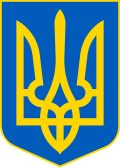
Back انتفاضة خميلينتسكي Arabic Xmelnitski üsyanı Azerbaijani هملنیتسکی آیاقلانماسی AZB Паўстанне Хмяльніцкага Byelorussian Въстание на Хмелницки Bulgarian Rebel·lió de Khmelnitski Catalan Chmelnického povstání Czech Khmelnytskijopstanden Danish Chmelnyzkyj-Aufstand German Εξέγερση του Χμελνίτσκι Greek
This article includes a list of general references, but it lacks sufficient corresponding inline citations. (May 2024) |
| Khmelnytsky Uprising | |||||||||
|---|---|---|---|---|---|---|---|---|---|
| Part of the Deluge | |||||||||
 Entrance of Bohdan Khmelnytskyi to Kyiv in 1649 by Mykola Ivasyuk in the 19th century | |||||||||
| |||||||||
| Belligerents | |||||||||
| First phase: | First phase: | ||||||||
| Second phase: | Second phase: | ||||||||
| Third phase: | Third phase: | ||||||||
| Pereaslav phase: | Pereaslav phase: | ||||||||
| Radnot phase: |
Radnot phase:
| ||||||||
| Commanders and leaders | |||||||||
|
(after Radnot) |
(till Radnot) | ||||||||
| History of Ukraine |
|---|
 |
The Khmelnytsky Uprising,[a] also known as the Cossack–Polish War,[4] or the Khmelnytsky insurrection,[5] was a Cossack rebellion that took place between 1648 and 1657 in the eastern territories of the Polish–Lithuanian Commonwealth, which led to the creation of a Cossack Hetmanate in Ukraine. Under the command of hetman Bohdan Khmelnytsky, the Zaporozhian Cossacks, allied with the Crimean Tatars and local Ukrainian peasantry, fought against Commonwealth's forces. The insurgency was accompanied by mass atrocities committed by Cossacks against prisoners of war and the civilian population, especially Poles, Jews and Roman Catholic and Ruthenian Uniate clergy,[6][7] as well as savage reprisals by loyalist Jeremi Wiśniowiecki, the voivode of Ruthenian descent (military governor) of the Ruthenian Voivodeship.[8]: 355
The uprising has a symbolic meaning in the history of Ukraine's relationship with Poland and Russia. It ended the Polish Catholic szlachta′s domination over the Ukrainian Orthodox population; at the same time, it led to the eventual incorporation of eastern Ukraine into the Tsardom of Russia initiated by the 1654 Pereiaslav Agreement, whereby the Cossacks would swear allegiance to the tsar while retaining a wide degree of autonomy. The event triggered a period of political turbulence and infighting in the Hetmanate known as the Ruin. The success of the anti-Polish rebellion, along with internal conflicts in Poland and concurrent wars waged by the Poles against Russia and Sweden, ended the Polish Golden Age and caused a secular decline of Polish power during the period known as "the Deluge".
In Jewish history, the Uprising is known for the atrocities against the Jews who, in their capacity as leaseholders (arendators), were seen by the peasants as their immediate oppressors and became the subject of antisemitic violence.[6][9] The Jews consider this event "the biggest national catastrophe since the destruction of Solomon's Temple."[10]
- ^ Бойко, И., Голобуцкий, В., Гуслистый, К. (1954). Воссоединение Украины с Россией. Moscow: Издательство Академии Наук СССР.
- ^ Зинько М. А. (2016). Освободительная война украинского и белорусского народов 1648–54 гг.. Moscow: Great Russian Encyclopedia, old.bigenc.ru
- ^
- Zhang, Jiansheng (25 February 2024). "Policy Research: Who Made Ukraine's Independence?". thesundaydiplomat.com. Retrieved 18 March 2025.
Founder of the Cossack Hetmanate, Khmelnytsky led a successful uprising against the Polish-Lithuanian Commonwealth from 1648 to 1657, ultimately establishing an independent Cossack state.
- Sysyn, Frank (2024). The Polish–Lithuanian Commonwealth and the Birth of Modern Ukraine: A Reappraisal of the Khmelnytsky “Revolution” (PDF). Canada: University of Alberta. p. 21.
Ukraine had the most to offer to general European discussions in the question of how a successful revolt could be mounted in the seventeenth century that could fulfill many of the criteria of a revolution.
- Cataliotti, Joseph (9 May 2023). "Khmelnytsky Uprising History, Causes & Aftermath". study.com. Retrieved 18 March 2025.
After nearly a decade of bloodshed, the uprising was successful, overthrowing Polish-Lithuanian rule.
- Dyczok, Marta (2024). Ukraine not ‘the’ Ukraine. Cambridge University Press. ISBN 9781009365536.
Khmelnytsky was the hetman who led the successful seventeenth-century uprising that freed many Ukrainian lands from Polish rule, but in the process, numerous Poles and Jews were killed, and the Cossack leader is depicted as a villain in their historiographies.
- Shelton, Dinah (2005). Encyclopedia of Genocide and Crimes Against Humanity. Vol. 1. Macmillan Reference. p. 176. ISBN 0028658477.
During the decade of his rule, Chmielnicki was responsible for leading a successful revolt against the Polish-Lithuanian Commonwealth, which dominated Ukraine at the time, and for bringing the lands he controlled under the authority of the tsardom of Muscovy in 1654.
- Zhang, Jiansheng (25 February 2024). "Policy Research: Who Made Ukraine's Independence?". thesundaydiplomat.com. Retrieved 18 March 2025.
- ^ "Cossack-Polish War". www.encyclopediaofukraine.com. Archived from the original on 11 June 2022.
- ^ The Khmelnytsky insurrection Britannica
- ^ a b "Khmel'nitskiy Bogdan" Хмельницкий Богдан [Khmelnitsky Bogdan]. The Shorter Jewish Encyclopedia (in Russian). 2005. Archived from the original on 6 March 2022.
- ^ Batista, Jakub (2014). "Chmielnicki Massacres (1648–1649)". In Mikaberidze, Alexander (ed.). Atrocities, Massacres, and War Crimes: An Encyclopedia. Vol. 1. Santa Barbara, California: ABC-CLIO. pp. 100–101. ISBN 978-1-59884-926-4.
- ^ Cite error: The named reference
davieswas invoked but never defined (see the help page). - ^ Rosenthal, Herman (1906). "Cossacks' Uprising". The Jewish Encyclopedia. Archived from the original on 21 April 2024.
- ^ Mikołaj Gliński (27 October 2014). "A Virtual Visit to the Museum of the History of Polish Jews". Culture.pl. Retrieved 2018-09-25.
Cite error: There are <ref group=lower-alpha> tags or {{efn}} templates on this page, but the references will not show without a {{reflist|group=lower-alpha}} template or {{notelist}} template (see the help page).